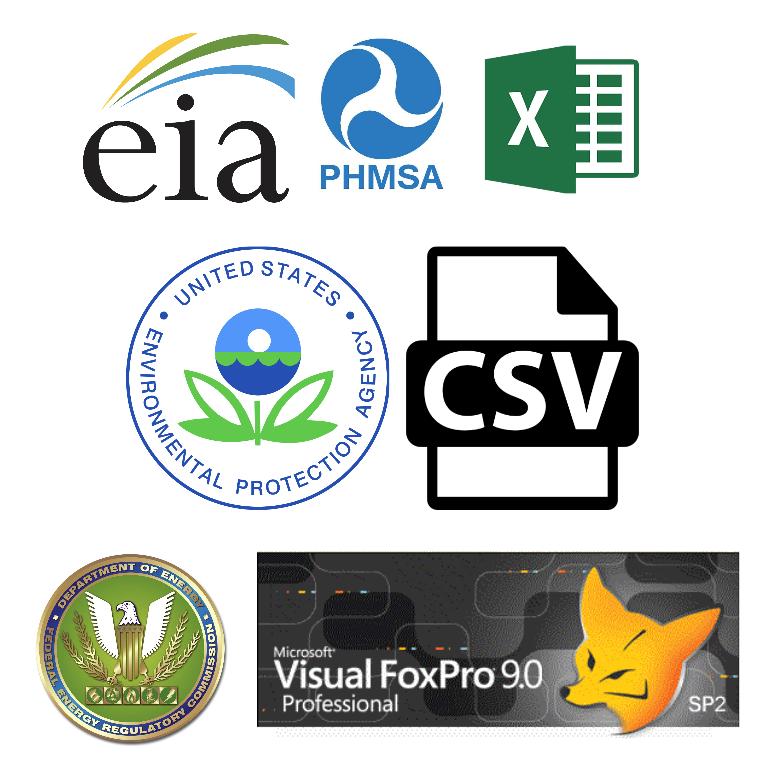A roundup of interesting posts related to data, code, energy, or climate that we came across in the first week of March, 2021.
Energy & Climate
- Xcel Energy’s Comanche 3 coal plant in Colorado continues to be an expensive boodoggle. It’s spent 2 of its first 10 years of operation shut down for maintenance, forcing Xcel to buy electricity on the open market to fill the gap. But actually this was good for their customers, since the electricity the plant produces when it is running is so expensive ($66.25/MWh) that this actually saved customers money! Unfortunately they’ll still be on the hook for remaining capital costs far into the future. Xcel thinks they’ll use the plant as a seasonal or load following resource after 2030… at which point Xcel will still have $460M left in the plant.
- Market Design for the Clean Energy Transition: Advancing Long-Term Approaches. Materials from a workshop put on by WRI and Resources for the Future, exploring how electricity markets need to adapt to accommodate lots of zero carbon, very low marginal cost generation, that’s also not entirely dispatchable.
- A post from the Energy and Policy Institute looking at
political“miscellaneous” spending by utilities, as reported in the FERC Form 1 — using our data! - Securitization in Action: How US States are Shaping an Equitable Coal Transition: a post from some of our collaborators at RMI, looking at some of the work our data liberation has helped enable — namely getting uneconomic fossil generation offline as cheaply as possible. Well, as cheaply as possible without forcing the utilities to absorb the costs anyway.
- CMIP6: the next generation of climate models explained. A look at how climate scientists compare their models in a standardized way, so that they can understand why they get different answers sometimes. This is something we really need more of in the energy modeling space — otherwise every conversation eventually devolves into criticizing the inputs and assumptions.
Data & Code
- Command Line Interface Guidelines: a collection of best practices for designing modern command line tools that are relatively user friendly, and take advantage of many features of modern Unix terminals.
- Column Names as Contracts: an interesting post by Emily Reiderer about the potential benefits of storing metadata in column names using a controlled vocabulary, allowing them to be programmatically parsed.
- Embedding column-name contracts in data pipelines with dbt builds on that last post, and looks at how Jinja templates and tools like dbt let you do more interesting dynamic data work if your columns have consistent and controlled names.
- What is dbt anyway? It stands for “data build tool” and it can be used to specify, store, and version control complex data transformation instructions as text files. A lot of the data we’re working with from FERC and EIA are too messy for this to be helpful in our initial ETL process, but once we’ve got the databases being populated in the cloud automatically, this could be a good way to create new derived data products. Thanks to our friend Brittany Bennett at Sunrise Movement for telling us about dbt.
- I helped build ByteDance’s censorship machine. A story about what it’s like to work inside a tech company actively implementing censorship measures. ByteDance is the Chinese owner of TikTok.
- Documentation for pydantic. We’re trying to make all of our metadata programmatically accessible, and remove duplication wherever possible, and using pydantic to parse and validate the metadata we compile by hand so we know it’s at least structurally sound.
- Python Packages is an online book about how to package and distribute… Python packages. We wish we’d had this a couple of years ago when we were figuring it out for the first time! Focuses on modern rather than legacy frameworks, going straight for pyproject.toml, poetry, and CI/CD using GitHub actions. There’s also a cookie cutter repo on GitHub that templates many of the practices from the book. Via Tiffany Timbers.
- EPA has released a crosswalk table that connects their CEMS data to the EIA boilers and generators. Thank goodness we won’t have to compile it now. More info in their GitHub repo.
- Nice preprint from Ryan Abernathey et al. on cloud-native scientific data repositories. This is very much in line with our plans for the PUDL data — even though our data is several orders of magnitude smaller than a lot of what he’s talking about.
- Eliminating Toil is a short essay from some Googlers on the nature of a particular kind of work that shows up in many data wrangling (and software) contexts. A lot of our mission here is saving others from data toil.
- Great Expectations and Pandas Profiling: a blog post on how to use these two tools together to automatically draft data validation test cases. Vaguely along the same lines as Pandera, though that library has more of a statistical bent.
